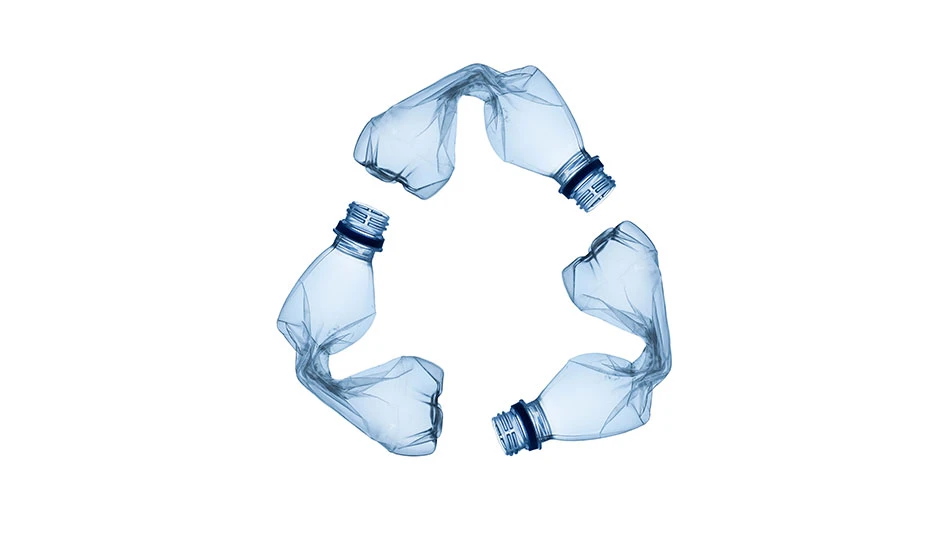
chones | stock.adobe.com
The U.S. recycling rate for polyethylene terephthalate (PET) in 2022 was 29 percent, down slightly from 30.3 percent in 2021, and the North American (U.S., Canada and Mexico) rate was 37.8 percent, down slightly from 38.4 percent in 2021, according to the 2022 PET Recycling Report from the National Association for PET Container Resources (NAPCOR), Middleton, Wisconsin.
The report also notes demand for recycled PET (rPET) remained strong in 2022, with bottle markets in the U.S. and Canada comprising 50 percent of end market consumption for the first time. Recycled content used in U.S. bottles grew by 15 percent in 2022 to reach 870 million pounds.
Laura Stewart, NAPCOR executive director, notes growing rPET demand in the food/beverage and nonfood bottle categories. “This is continued evidence that packaging made from PET can be reused and repurposed and has a key role to play in the circular economy,” she said. "Everyone involved, including manufacturers, consumers and packagers, needs to work together and make significant changes to ensure enough PET is collected and full circularity can be achieved.”
Tom Busard, NAPCOR chairman and chief polymers and recycling officer for Plastipak Packaging Inc., Plymouth, Michigan, and president of Clean Tech, Plastipak’s recycling affiliate, says increased collection is needed to meet future legislated and voluntary recycled content demands.
Significant increases in PET collection will be needed to match future recycled content demands, the association says. To reach a widely quoted target for rPET content—25 percent by 2025—in all U.S. bottles, PET recyclers will need 1.75 billion pounds of PET, or 85 percent more material than was collected in 2022. To achieve 50 percent recycled content by 2030 in U.S. bottles, 3.87 billion pounds of postconsumer PET feedstock will be required, which is more than three times the weight collected in 2022. NAPCOR says more PET packaging must be collected through new policies, changes in consumer habits and better recycling infrastructure to meet this demand forecast.
In 2022, PET thermoforms used an average of 12 percent postconsumer rPET content, indicating a slow but steady progress to integrate more recycled content into thermoform manufacturing, according to NAPCOR, which also says use of recyclate from this form of packaging increased by 88 percent compared with 2021. The association adds that more collection and end markets willing to use this feedstock are needed to build momentum for thermoform circularity.
“Our NAPCOR team goes above and beyond to ensure consumers understand recycling efforts and the impact it has on our planet,” Stewart says. “Our analyses of postconsumer PET bottles, the PET thermoform market and supply chains for virgin and recycled PET detail important data needed to inform policy and industry developments toward PET circularity. Work done by the NAPCOR team to ensure sustainability and growth serves both our industry and our planet.”
To access the 2022 PET Recycling Report, visit NAPCOR’s website here.Latest from Recycling Today
- Orion ramping up Rocky Mountain Steel rail line
- Proposed bill would provide ‘regulatory clarity’ for chemical recycling
- Alberta Ag-Plastic pilot program continues, expands with renewed funding
- ReMA urges open intra-North American scrap trade
- Axium awarded by regional organization
- Update: China to introduce steel export quotas
- Thyssenkrupp idles capacity in Europe
- Phoenix Technologies closes Ohio rPET facility





